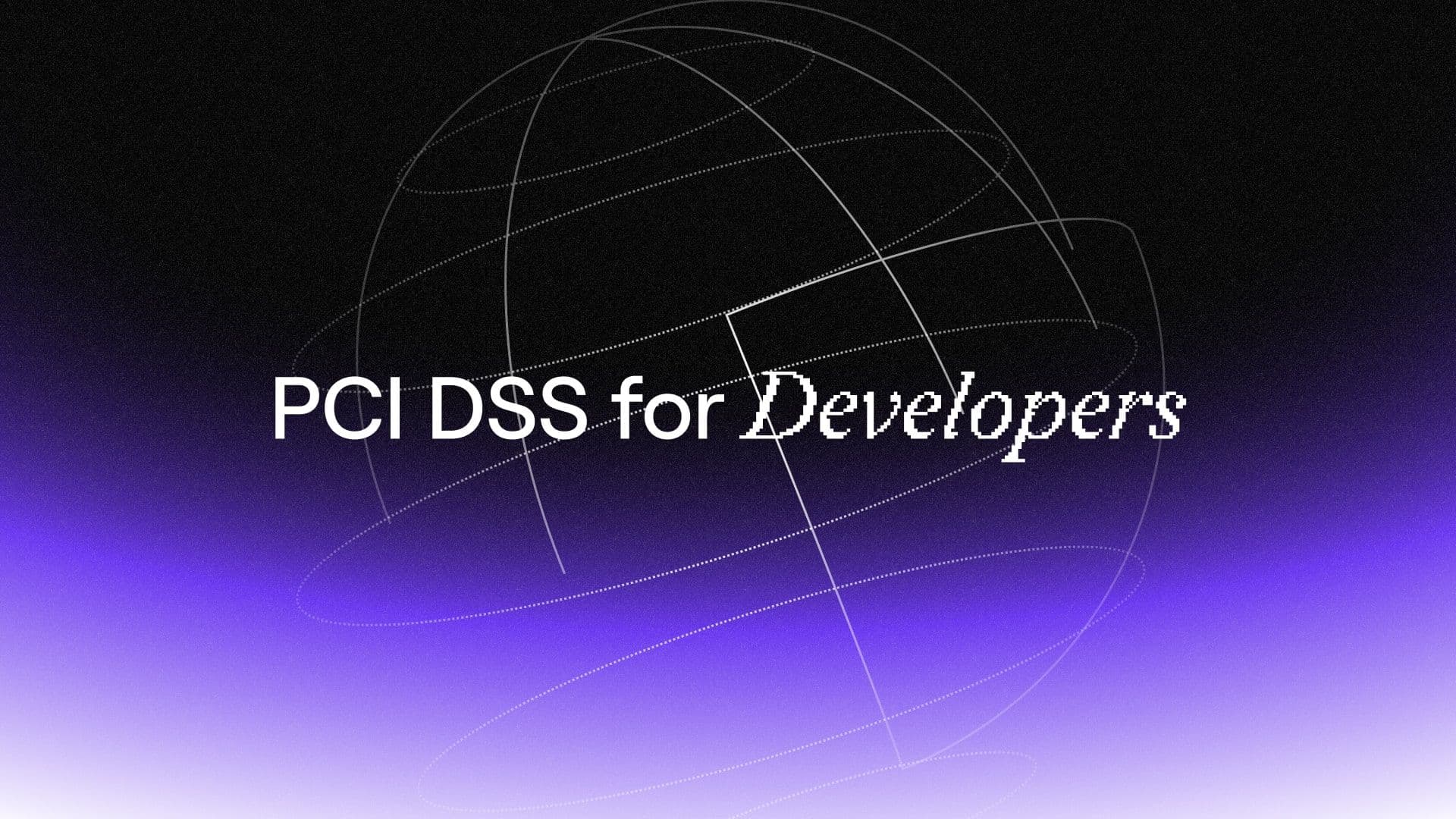ASV Scans: What they are, when you need them, and how they work
Learn what ASV scans are, when you need them for PCI compliance, and how Evervault simplifies the process with a modern, user-friendly solution.


Developers dream of many things. They dream of clean code, good documentation and self-explanatory errors. (Soon, AI-assisted developers may even dream of electric sheep.) Developers don't dream of PCI compliance. That's because compliance can be confounding. It conjures images of complicated controls, endless spreadsheets and strict audits. Payment Card Industry Data Security Standard (PCI DSS) compliance involves over 300 controls, significant engineering lift (that would otherwise be devoted to product) and takes months to achieve. But while PCI compliance may never be dream-material, achieving it doesn't have to be nightmarish. It's possible to dramatically simplify the process, saving your organisation months and up to $100,000. This guide explains what PCI DSS is, why it is important, and how you can achieve it with minimal effort.
In short:
The Payment Card Industry Data Security Standard (PCI DSS), published in 2005, is a global security standard which applies to any organisation that stores, processes, or transmits Cardholder Data (CHD). The standard was agreed upon between the major card brands to reduce the volume of fraud involving stolen cards. This primary piece of information to consider when protecting CHD and determining scope is the presence of the Primary Account Number (PAN). The PAN is the long (14+ digit) number on the card.
Organisations that fail to achieve compliance or are breached can be subject to fines, increased transaction fees and, in some extreme instances, termination of an acquiring contract. Fines can vary, however in a breach scenario, organisations should expect to:
PCI DSS is a particularly rigorous security standard:a spend of $100k over 12 months is not uncommon. With that rigour comes a significant overhead required to manage and demonstrate the continuous security of card data. This is why organisations who handle CHD are wise to reduce contact with CHD, reducing the impact of a card data breach and the compliance burden from a human and financial perspective.
PCI DSS is mandated by five major Card Brands (Visa, Mastercard, JCB, AmEx, Discover) and contractually enforced via acquiring banks.
If you are a merchant and have signed an acquiring contract with a bank since 2005, it is highly likely that you are contractually bound to be PCI DSS compliant.
It applies to service providers too. If you are a service provider, your merchants will likely ask for your Attestation of Compliance (AoC); its absence can often result in barriers to winning business.
Audit requirements, the rigour of audit and stakeholders differ based on the business model and volume of transactions, see table below:
| Level | Service Provider | Merchant | External Audit Required | Attestation | | --- | --- | --- | --- | --- | | 1 | >300k | >6m | Yes | Report on Compliance | | 2 | <300k | 1-6m | No | Self Assessment | | 3 |-| 20k-1m | No | Self Assessment | | 4 |-| <20k | No | Self Assessment |
Getting started can seem overwhelming as there is much content and nuance to decipher, but like any audit, the first task is determining the scope. The cardholder data environment comprises people, processes, and technologies that store, process, or transmit cardholder data or sensitive authentication data. By mapping out your cardholder data flows, you can determine your scope.
PCI DSS requirements apply to all system components included in or connected to the cardholder data environment; in the simplified diagram below, all components are in scope for the ~300 PCI DSS Requirements, as they either directly store, process or transmit card data or connect to systems which store card data. More and more, as a full-stack developer, it's your job to secure the data, infrastructure and code.

Developers may be responsible for the technical and management implementation of the following controls: network security (architecture, rules management, web app firewall, load balancing etc), system hardening and configuration, secure cryptographic implementation, encryption key management, algorithm selection and configuration, TLS configuration, anti-malware management, secure coding training, dependency assessment, app sec: web application scanning (DAST / SAST) and dependency analysis, training Owasp top 10, peer code review, software development change management, consistent implementation of defensive coding techniques, patching and vulnerability management, strict change management, segregation of cloud accounts, users and the implementation of least privilege, authentication security and MFA, physical security, logging, monitoring and alerting - 24x7 response, intrusion detection, vulnerability scanning and penetration testing, network segregation effectiveness, risk assessment, policy development, incident response, awareness training, threat landscape monitoring and phishing simulations.
Typically achieving and maintaining PCI requires an enormous uplift of engineering effort to apply the controls; this is often expensive and diverts engineering effort away from the core product. Achieving PCI compliance involves an opportunity cost - it takes precious resources (time and money) that would have otherwise been dedicated to product.
There are three primary ways to reduce the burden of PCI DSS Compliance.
Methods:
Effort Required:
Method:
Effort Required:
Methods:
Effort Required:
| Approach | Effort Required | |------------------------------------------------------------------------------------|-----------------| | Configure and maintain a series of automations | High | | Reduce cardholder data environment footprint | High | | Reduce scope and de-risk by never handling plaintext card data in your environment | Low |
At Evervault, we provide complete solutions to help organisations achieve the highest reduction of effort, maintain compliance and de-risk their environments from cardholder data breaches.
Click here to read more about how Evervault can dramatically reduce the scope of your compliance burden by ensuring you never touch credit card data in plaintext.